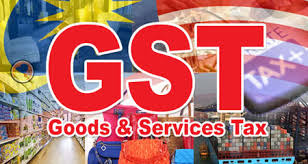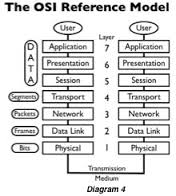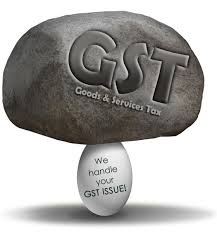Now a days a much hustle has been created in the parliament related to a new term that is GST.
GOODS AND SERVICES AND TAX – known mainly as GST – is a comprehensive tax levy on manufacture, sale and consumption of goods and services on a national level.One of the biggest taxation reforms in India is all set to integrate state economics and boost overall growth.India today has variety of taxes on good and services from VAT,service tax ,custom duty , excise duty to many others.
The most significant contributing factor to tax cascading is the partial coverage by central and state taxes.These
also makes it complex in determining the nature of transaction i.e sales vs service.They have a narrow base
and involve complexity in administration hence there is a well acclaimed need for GST which is to be maintained single hand-idly at national level.
The taxes are levied by central as well as the state therefore the business man has to maintain accounts which comply with all applicable laws.It is perceived to be a complex system.The discussion relating to implementation of GST was
started by Mr. Vajpayee’s govt under an empowered committee in 2000.It was given the task of designing the
GST model and overseeing the IT back-end preparedness for its roll out.Keeping this overall objective in view, an announcement was made by MR. Chidambaram, the Union Finance Minister, during the central budget of 2007–2008 that it would be introduced from April 1, 2010 and that the Empowered Committee of State Finance Ministers, on his request, would work with the Central Government to prepare a road map for introduction of GST in India.This was seen as a major comprehensive tax reform in the country.Major amendments and bills passed through Lok sabha and Rajya sabha and finally the GST is set to be implemented from 01/04/2016.
The GST will basically wipe the indirect tax slate clean , replacing around a dozen of indirect taxes and duties levied by the government.It has no scope for re- sale tax, additional tax, sales, special tax or scope for multiple levy on tax of goods and services such as sales tax , entry tax etc.it has zero rating of exports and inter state sales of goods and supply of services.It will leave behind three types of GST i.e. central, state and integrated GST as well as basic custom duty for imports from abroad.This will finally provide for a single and a uniform mechanism of levying indirect taxes.
Today one pays excise duty 12% VAT 14% on goods , 12% service tax on services. so the rate turn up to somewhere
between 12% to 16% whereas the average worldwide GST rate is around 18%. Hence GST is comprehensive and a need for India consisting of so many taxes which ultimately create a burden on the common man.
Worldwide 150 countries have adopted GST and India is in the now in the league.
Click here for government certification in Accounting, Banking & Finance





11 Comments. Leave new
well defined article.
Thanks!
Good one!
You have explained it well, and then comparing GST with other taxes is something new I have seen here.
Thank You Akul!
Well explained!
well explained
Thanks everyone.
Informative article !!!
Thanks!
Good article